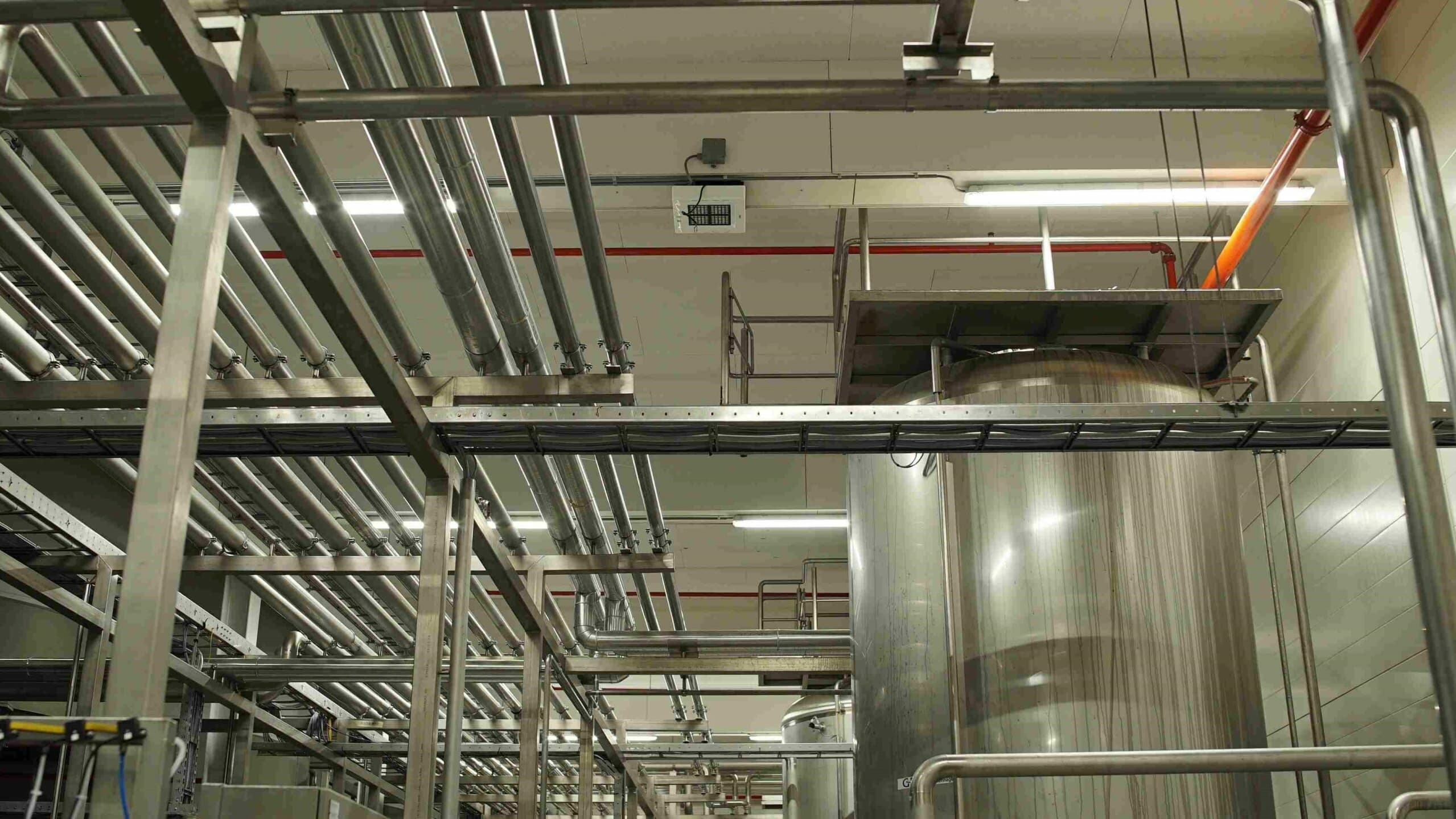EU SAFETY AND QUALITY STANDARDS
All products placed on the market or put into service within the European Union must meet the essential and detailed safety requirements provided for in the relevant legal regulations. Therefore, it should be confirmed that given product has been tested and meets EU health, safety and environmental requirements before it is marketed. This fact is acknowledged by the CE marking.

CE Marking
The abbreviation CE is derived from a French expression Conformité Européenne, which means in accordance with the directives of the European Union in English. The CE marking guarantees that given product passed specialist tests and meets the essential quality and safe standards envisaged for it and provided in the so-called New Approach directives[1]. They pertain to user’s safety, health and environmental protection at all stages of manufacture, and identify hazards that should be detected and eliminated by the manufacturer.
The CE marking symbolises that the manufacturer or their authorised representative declares that the product complies with the essential requirements laid down in directives pertaining to this product. It is presumed that a CE-marked product complies with the minimum legal safety requirements for such products.
The manufacturer or an authorised representative, on their own responsibility, affixes the CE marking on the product after it has been proved that it meets the essential requirements laid down in the directives, i.e. after the having carried out and obtained a positive result of the conformity assessment procedure, and after issuing the EC declaration of conformity.
If a product manufactured or imported (from outside the EU) by a manufacturer belongs to the categories covered by the New Approach directives, which provide for the use of CE marking, it has to meet the essential requirements laid down in these provisions. Compliance with these requirements must be declared by affixing the CE mark to the product.
Owing to the CE mark, the products that meet the essential requirements provided for in the New Approach directives are able to flow freely on the common European market. This is the mechanism that facilitates competition and create equal opportunities for all producers. In the European Union there is currently one common European market with common and uniform principles due to the freedoms, on which the EU system is based, which in particular include the free movement of goods.
The CE marking is therefore an instrument that allows the product to appear on the Single European Market, which consists of over 30 countries. Without the CE marking, an entrepreneur has no right to place such product on the market or put it into service. This is the elementary EU marking under which a given product is authorised in the EU.
When joining the community, the market of each Member State becomes a European market, and hence the authorities of the Member States are obliged to apply European norms and standards.
[1] The New Approach directives and Regulations of the European Parliament and of the Council (regulations pertaining to CE marking) that require CE marking be affixed and EU declaration of conformity, EC declaration of conformity, EC/EU declaration of conformity and declaration of performance be issued, the list of which is provided at: https://www.ce-polska.pl/dyrektywy-nowego-podejscia-znak-ce

EU declaration of conformity
The EU declaration of conformity is a document that acknowledges compliance of the product with the essential requirements. Each New Approach directive provides for different requirements for a declaration of compliance dedicated to specified products. A typical EU declaration of conformity consists i.a. of the wording: EU DECLARATION OF CONFORMITY, date of issue, product model/product (product, type, batch and series number), name and address of the manufacturer or their authorised representative, information that the declaration of conformity is issued under the sole responsibility of the manufacturer, subject of the declaration (product identification that makes it possible to track its history back; it may contain a sufficiently clear colour image), reference to specific provisions, reference to the essential provisions, additional information (e.g. reference to the activities of the notified body, if it participated in the certification process), signature of the person representing the company (owner or representation specified in the National Court Register).
The declaration of conformity is a document issued by the manufacturer of the product or their authorised representative and constitutes an independent legally binding commitment stating that the product complies with the essential requirements of the relevant directive. A manufacturer is obliged to issue a declaration of conformity for CE-marked products. In contrast, a product subject to conformity assessment but without an EU declaration of conformity may not be placed on the market or put into service within the EU. A contratio it should be assumed that every CE-marked product with the EU declaration of conformity issued meets all requirements provided for in EU legislation, and thus should be released for distribution on the European market covering all Member States.

The principle of mutual recognition
Notwithstanding the New Approach directives, the principle of mutual recognition, based on the case law of the Court of Justice of the European Union, is applicable in the EU. Its primary function is to ensure the principle of free movement of goods within the internal market. In line with this principle a product, which has been manufactured and marketed in accordance with the regulations in force in the country of origin, must be allowed to move freely and access to the national markets of all EU Member States. In practice, this means that no Member State can prohibit sale of products in its territory which have been lawfully placed on the market in another Member State, even if those products were manufactured in accordance with technical rules other than those governing the national products. It should be noted that the principle of mutual recognition is applicable to the admissibility of the so-called non-harmonized products, i.e. the ones that are not subject to the New Approach directives. As far as the products referred to in the directives are concerned, the principle of mutual is implemented by the harmonisation of the European market postulated and introduced to the Community order precisely under the directives harmonising the European market. Therefore, it is unacceptable to refuse to admit a product to the market of a Member State that has the required marking, since another Member State is obliged to allow free movement even of products without such a marking which have been authorised in the country of origin.

National certificates
It should be noted here that all additional certificates provided for in the internal regulations of the Member States are market standards, which in no way constitutes grounds for preventing the admission of products authorised in other Member States to the national market that meet the requirements provided for in EU legislation and have a set of necessary markings and documents solely on the basis that they do not have domestic certificates. Furthermore, not having a specific certificate does not mean that given product does not meet market standards provided for in a given Member State. However, the refusal to admit products that meet all EU requirements, based only on the expectation that the product will meet standards higher than those provided for in EU law, without a valid legal basis, violates the principle of the free movement of goods, i.e. one of the four pillars on which the European Union is founded. In particular, it should be emphasised that GS, VDE, ENEC or ENEC+ are not obligatory and mandatory for products that are to be admitted to trading on the German market.
In Germany, as in every other Member State, exported goods are released for free circulation if there are no bans or restrictions arising from various provisions and regulations. As far as the safety standards are concerned, the Community standards are applicable, i.e. the requirements described above related to the EU declaration of conformity and the CE marking. It is not mandatory to obtain additional certificates and this is only a market standard. This is due to the fact that many entities on the German market overstate EU standards, and therefore market participants often require acknowledgement that the contractor’s products meet quality level higher than the Community ones.
References
- The Act on the conformity assessment system of 30 August 2002
- https://eur-lex.europa.eu/legal-content/PL/TXT/PDF/?uri=CELEX:32014L0035&qid=1522846983979&from=PL – DIRECTIVE 2014/35/EU OF THE EUROPEAN PARLIAMENT AND OF THE COUNCIL of 26 February 2014 on the harmonisation of the laws of the Member States relating to the making available on the market of electrical equipment designed for use within certain voltage limits
- https://www.ce-polska.pl/deklaracja-zgodnosci-ue
- http://www.exporter.pl/kraje/k_europa/niemcy_wejscie.html
- https://books.google.pl/books?id=wwWtDwAAQBAJ&pg=PA207&lpg=PA207&dq=is+vde+certificate+mandatory+in+german+law&source=bl&ots=fUjcqUx4dc&sig=ACfU3U2au7BhPfq-ZHmgVJoVDybyykJp8Q&hl=pl&sa=X&ved=2ahUKEwiNgu69zdfkAhVRe8AKHdbrAGIQ6AEwBHoECAgQAQ#v=onepage&q=vde&f=false
- https://www.tuv.com/pl/poland/o_nas/magazyn_jakosc
- https://europa.eu/youreurope/business/product-requirements/labels-markings/ce-marking/index_pl.htm
- https://www.uokik.gov.pl/oznakowanie_ce_i_jego_znaczenie.php
- https://www.gov.pl/web/przedsiebiorczosc-technologia/punkt-kontaktowy-do-spraw-produktow
- https://www.ce-polska.pl/dyrektywy-nowego-podejscia-znak-ce along with referenced acts
- https://www.bmas.de/DE/Themen/Arbeitsschutz/Produktsicherheit/elektrische-betriebsmittel.html
- http://www.gesetze-im-internet.de/prodsg2011v_1/
- https://ec.europa.eu/growth/sectors/electrical-engineering/
- https://www.lightingeurope.org/
See other articles
Case study – Luxon and Indulux for the Grolsch brewery in the Netherlands
We have established cooperation with Indulux that included the delivery of LED luminaires to facilities belonging to Grolsch in the Netherlands. Reducing electricity consumption, caring for the environment and employees and the need to phase out fluorescent lamps were the main reasons why the company decided to replace its light sources.
Project in the KOMFORT HOME shop in Komorniki
What are the major challenges and needs for showrooms planning to purchase lighting? Find out more about the case study of our customer KOMFORT HOME. The shop, located in Komorniki, was fitted with modern and energy-efficient LED lighting.




